Cover
Table of Contents
Preface
I. Basics
1. What Is C?
1.1 How Programming Works
1.2 Brief History of C
1.3 How C Works
1.4 How to Learn C
2. Basics of Program Writing
2.1 Programs from Conception to Execution
2.2 Creating a Real Program
2.3 Creating a Program Using a Command-Line Compiler
2.4 Creating a Program Using an Integrated Development Environment
2.5 Getting Help on UNIX
2.6 Getting Help in an Integrated Development Environment
2.7 IDE Cookbooks
2.8 Programming Exercises
3. Style
3.1 Common Coding Practices
3.2 Coding Religion
3.3 Indentation and Code Format
3.4 Clarity
3.5 Simplicity
3.6 Summary
4. Basic Declarations and Expressions
4.1 Elements of a Program
4.2 Basic Program Structure
4.3 Simple Expressions
4.4 Variables and Storage
4.5 Variable Declarations
4.6 Integers
4.7 Assignment Statements
4.8 printf Function
4.9 Floating Point
4.10 Floating Point Versus Integer Divide
4.11 Characters
4.12 Answers
4.13 Programming Exercises
5. Arrays, Qualifiers, and Reading Numbers
5.1 Arrays
5.2 Strings
5.3 Reading Strings
5.4 Multidimensional Arrays
5.5 Reading Numbers
5.6 Initializing Variables
5.7 Types of Integers
5.8 Types of Floats
5.9 Constant Declarations
5.10 Hexadecimal and Octal Constants
5.11 Operators for Performing Shortcuts
5.12 Side Effects
5.13 ++x or x++
5.14 More Side-Effect Problems
5.15 Answers
5.16 Programming Exercises
6. Decision and Control Statements
6.1 if Statement
6.2 else Statement
6.3 How Not to Use strcmp
6.4 Looping Statements
6.5 while Statement
6.6 break Statement
6.7 continue Statement
6.8 Assignment Anywhere Side Effect
6.9 Answer
6.10 Programming Exercises
7. Programming Process
7.1 Setting Up
7.2 Specification
7.3 Code Design
7.4 Prototype
7.5 Makefile
7.6 Testing
7.7 Debugging
7.8 Maintenance
7.9 Revisions
7.10 Electronic Archaeology
7.11 Marking Up the Program
7.12 Using the Debugger
7.13 Text Editor as a Browser
7.14 Add Comments
7.15 Programming Exercises
II. Simple Programming
8. More Control Statements
8.1 for Statement
8.2 switch Statement
8.3 switch, break, and continue
8.4 Answers
8.5 Programming Exercises
9. Variable Scope and Functions
9.1 Scope and Class
9.2 Functions
9.3 Functions with No Parameters
9.4 Structured Programming
9.5 Recursion
9.6 Answers
9.7 Programming Exercises
10. C Preprocessor
10.1 #define Statement
10.2 Conditional Compilation
10.3 include Files
10.4 Parameterized Macros
10.5 Advanced Features
10.6 Summary
10.7 Answers
10.8 Programming Exercises
11. Bit Operations
11.1 Bit Operators
11.2 The and Operator (&)
11.3 Bitwise or (|)
11.4 The Bitwise Exclusive or (^)
11.5 The Ones Complement Operator (Not) (~)
11.6 The Left- and Right-Shift Operators (<<, >>)
11.7 Setting, Clearing, and Testing Bits
11.8 Bitmapped Graphics
11.9 Answers
11.10 Programming Exercises
12. Advanced Types
12.1 Structures
12.2 Unions
12.3 typedef
12.4 enum Type
12.5 Casting
12.6 Bit Fields or Packed Structures
12.7 Arrays of Structures
12.8 Summary
12.9 Programming Exercises
13. Simple Pointers
13.1 Pointers as Function Arguments
13.2 const Pointers
13.3 Pointers and Arrays
13.4 How Not to Use Pointers
13.5 Using Pointers to Split a String
13.6 Pointers and Structures
13.7 Command-Line Arguments
13.8 Programming Exercises
13.9 Answers
14. File Input/Output
14.1 Conversion Routines
14.2 Binary and ASCII Files
14.3 The End-of-Line Puzzle
14.4 Binary I/O
14.5 Buffering Problems
14.6 Unbuffered I/O
14.7 Designing File Formats
14.8 Answers
14.9 Programming Exercises
15. Debugging and Optimization
15.1 Debugging
15.2 Interactive Debuggers
15.3 Debugging a Binary Search
15.4 Runtime Errors
15.5 The Confessional Method of Debugging
15.6 Optimization
15.7 Answers
15.8 Programming Exercises
16. Floating Point
16.1 Floating-Point Format
16.2 Floating Addition/Subtraction
16.3 Multiplication
16.4 Division
16.5 Overflow and Underflow
16.6 Roundoff Error
16.7 Accuracy
16.8 Minimizing Roundoff Error
16.9 Determining Accuracy
16.10 Precision and Speed
16.11 Power Series
16.12 Programming Exercises
III. Advanced Programming Concepts
17. Advanced Pointers
17.1 Pointers and Structures
17.2 free Function
17.3 Linked List
17.4 Structure Pointer Operator
17.5 Ordered Linked Lists
17.6 Double-Linked Lists
17.7 Trees
17.8 Printing a Tree
17.9 Rest of Program
17.10 Data Structures for a Chess Program
17.11 Answers
17.12 Programming Exercises
18. Modular Programming
18.1 Modules
18.2 Public and Private
18.3 The extern Modifier
18.4 Headers
18.5 The Body of the Module
18.6 A Program to Use Infinite Arrays
18.7 The Makefile for Multiple Files
18.8 Using the Infinite Array
18.9 Dividing a Task into Modules
18.10 Module Division Example: Text Editor
18.11 Compiler
18.12 Spreadsheet
18.13 Module Design Guidelines
18.14 Programming Exercises
19. Ancient Compilers
19.1 K&R-Style Functions
19.2 Library Changes
19.3 Missing Features
19.4 Free/Malloc Changes
19.5 lint
19.6 Answers
20. Portability Problems
20.1 Modularity
20.2 Word Size
20.3 Byte Order Problem
20.4 Alignment Problem
20.5 NULL Pointer Problem
20.6 Filename Problems
20.7 File Types
20.8 Summary
20.9 Answers
21. C's Dustier Corners
21.1 do/while
21.2 goto
21.3 The ?: Construct
21.4 The , Operator
21.5 volatile Qualifier
21.6 Answer
22. Putting It All Together
22.1 Requirements
22.2 Specification
22.3 Code Design
22.4 Coding
22.5 Functional Description
22.6 Expandability
22.7 Testing
22.8 Revisions
22.9 A Final Warning
22.10 Program Files
22.11 Programming Exercises
23. Programming Adages
23.1 General
23.2 Design
23.3 Declarations
23.4 switch Statement
23.5 Preprocessor
23.6 Style
23.7 Compiling
23.8 Final Note
23.9 Answer
IV. Other Language Features
A. ASCII Table
B. Ranges and Parameter Passing Conversions
C. Operator Precedence Rules
D. A Program to Compute a Sine Using a Power Series
Glossary


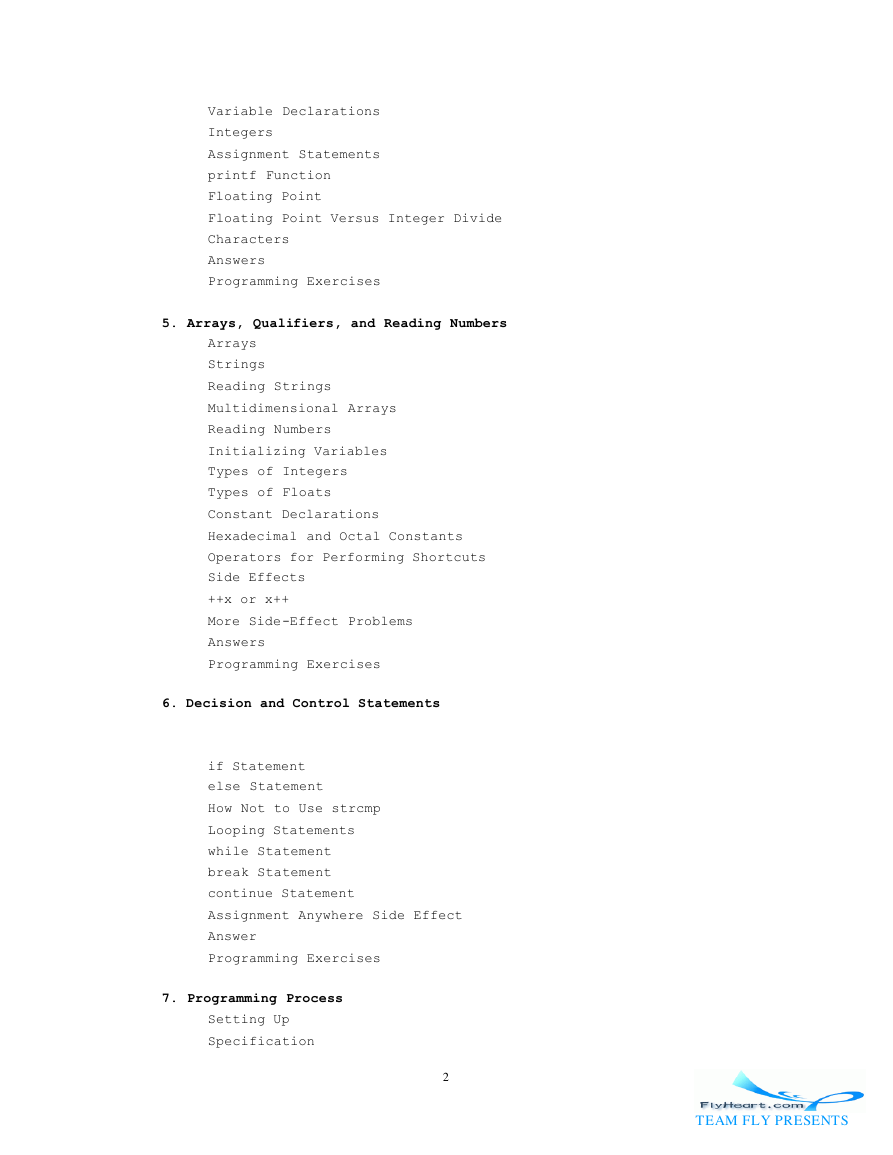
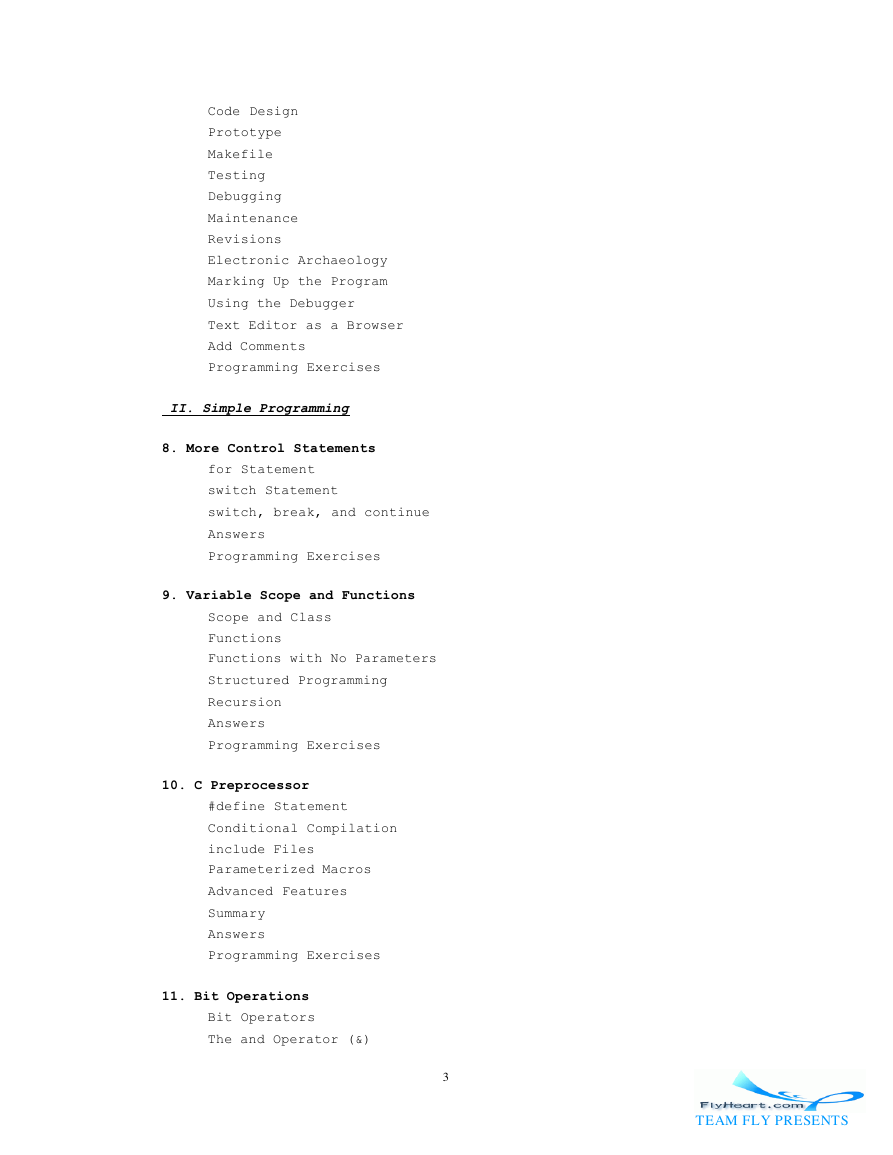
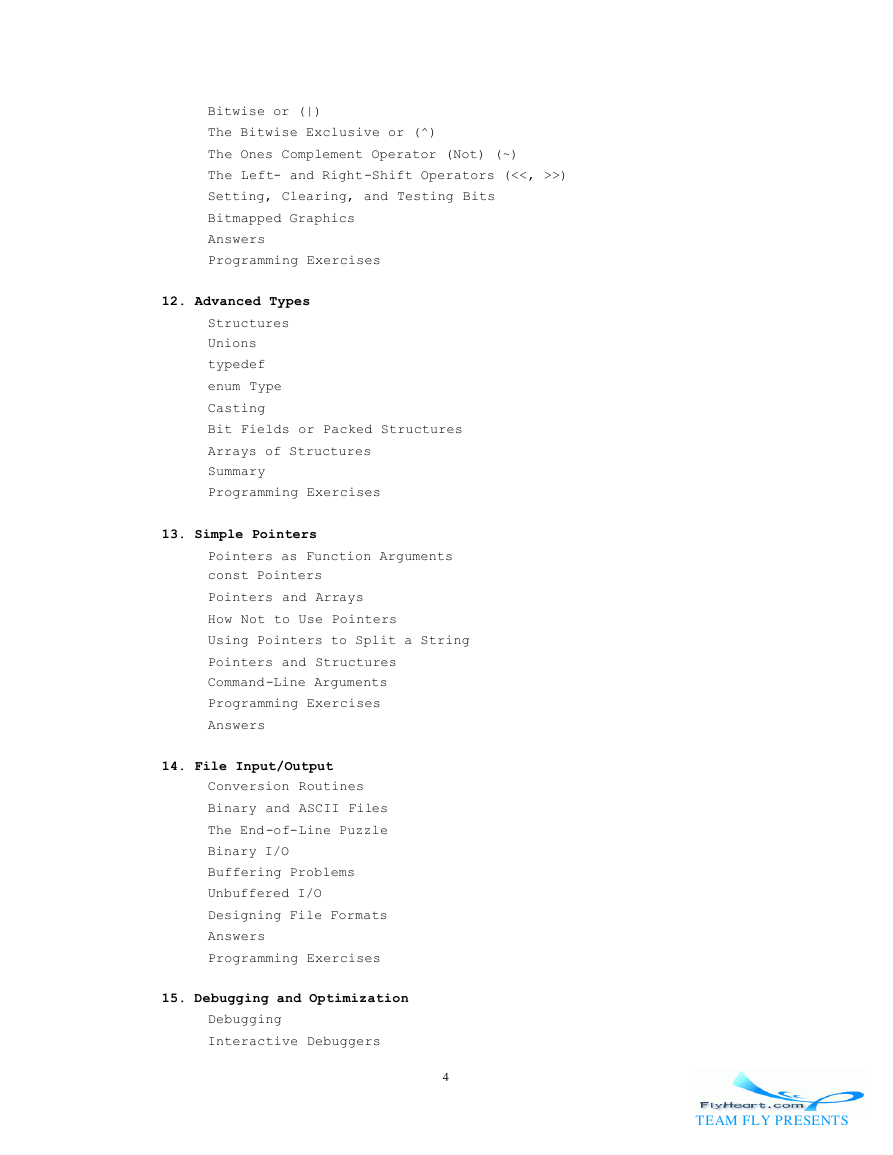
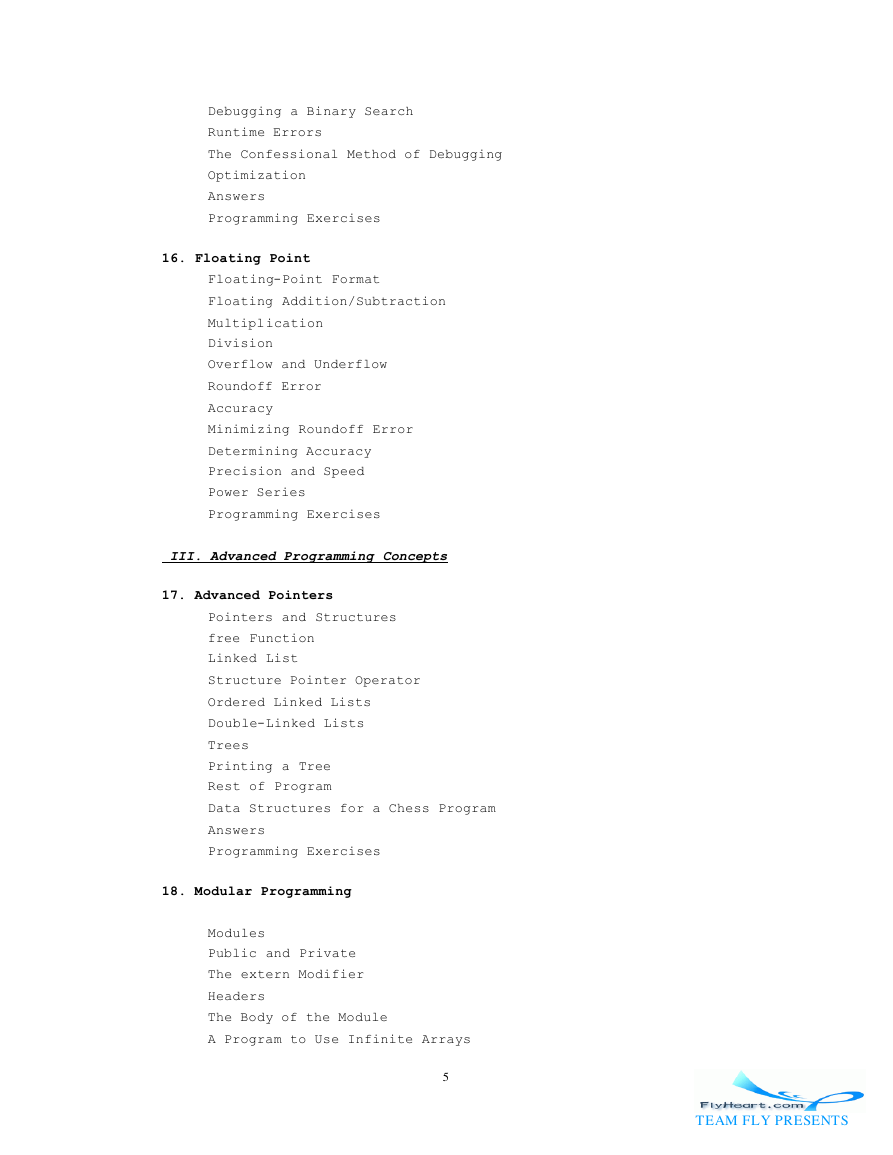
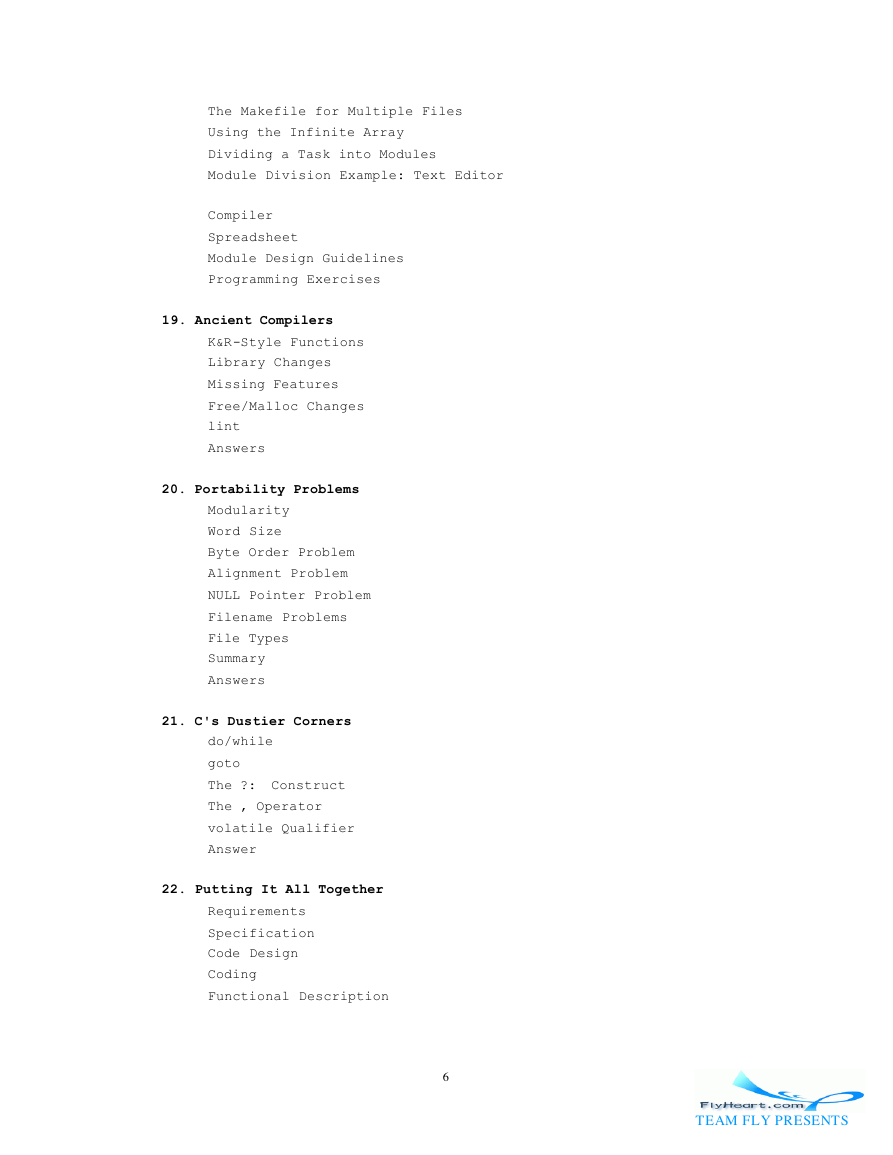









 2023年江西萍乡中考道德与法治真题及答案.doc
2023年江西萍乡中考道德与法治真题及答案.doc 2012年重庆南川中考生物真题及答案.doc
2012年重庆南川中考生物真题及答案.doc 2013年江西师范大学地理学综合及文艺理论基础考研真题.doc
2013年江西师范大学地理学综合及文艺理论基础考研真题.doc 2020年四川甘孜小升初语文真题及答案I卷.doc
2020年四川甘孜小升初语文真题及答案I卷.doc 2020年注册岩土工程师专业基础考试真题及答案.doc
2020年注册岩土工程师专业基础考试真题及答案.doc 2023-2024学年福建省厦门市九年级上学期数学月考试题及答案.doc
2023-2024学年福建省厦门市九年级上学期数学月考试题及答案.doc 2021-2022学年辽宁省沈阳市大东区九年级上学期语文期末试题及答案.doc
2021-2022学年辽宁省沈阳市大东区九年级上学期语文期末试题及答案.doc 2022-2023学年北京东城区初三第一学期物理期末试卷及答案.doc
2022-2023学年北京东城区初三第一学期物理期末试卷及答案.doc 2018上半年江西教师资格初中地理学科知识与教学能力真题及答案.doc
2018上半年江西教师资格初中地理学科知识与教学能力真题及答案.doc 2012年河北国家公务员申论考试真题及答案-省级.doc
2012年河北国家公务员申论考试真题及答案-省级.doc 2020-2021学年江苏省扬州市江都区邵樊片九年级上学期数学第一次质量检测试题及答案.doc
2020-2021学年江苏省扬州市江都区邵樊片九年级上学期数学第一次质量检测试题及答案.doc 2022下半年黑龙江教师资格证中学综合素质真题及答案.doc
2022下半年黑龙江教师资格证中学综合素质真题及答案.doc